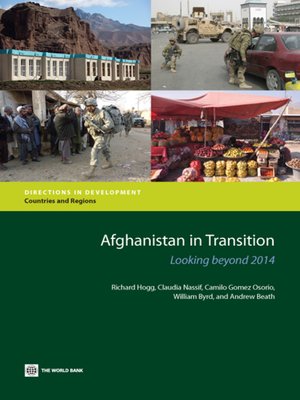
Sign up to save your library
With an OverDrive account, you can save your favorite libraries for at-a-glance information about availability. Find out more about OverDrive accounts.
Find this title in Libby, the library reading app by OverDrive.



Search for a digital library with this title
Title found at these libraries:
| Library Name | Distance |
|---|---|
| Loading... |
The withdrawal of most international troops by 2014 will have a profound and lasting impact on the country's economic and development fabric. This book explores some of these ramifications. Development progress since 2001 has been mixed. The country has recorded some major achievements such as rapid economic growth, relatively low inflation, better public financial management, and gains in basic health and education. Key social indicators, including life expectancy and maternal mortality, have improved markedly, and women are participating more in the economy. Yet in other respects, particularly governance and institution building, the country has fared less well, and many indicators have worsened in recent years. Afghanistan remains one of the world's least developed countries, with a per capita gross domestic product (GDP) of only $528. More than a third of the population live below the poverty line, more than half are vulnerable and at serious risk of falling into poverty, and three-quarters are illiterate. Additionally, political uncertainty and insecurity could undermine Afghanistan's transition and development prospects.
The large aid inflows that have benefited Afghanistan have also brought problems. Aid has underpinned much of the progress since 2001-including that in key services, infrastructure, and government administration-but it has also been linked to corruption, poor aid effectiveness, and weakened governance. Aid is estimated to be $15.7 billion-about the same as the size of the GDP in fiscal year 2011. Despite the large volume of aid, most international spending 'on' Afghanistan is not spent 'in' Afghanistan, as it leaves the economy through imports, expatriated profits of contractors, and outward remittances. Other countries' experience shows that the impact of large aid reductions on economic growth may be less than expected. The main issue for the future is how to manage this change, mitigate impacts, and put aid and spending on a more sustainable path.
This book is intended for a wide audience interested in the relationship between conflict, aid and development and how international responses to post-conflict state building and reconstruction may both help and hinder a countries transition out of conflict towards a more stable future.







